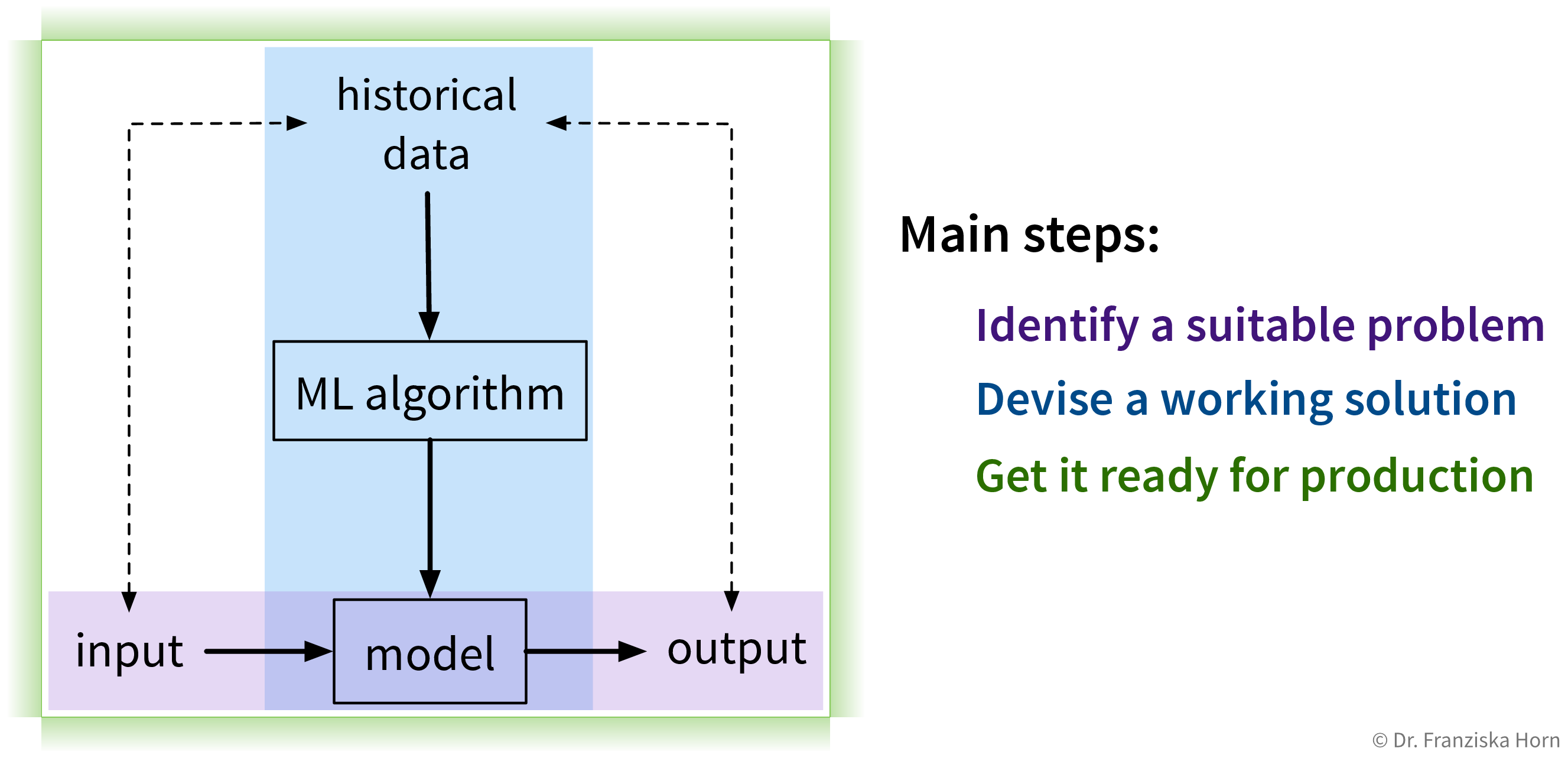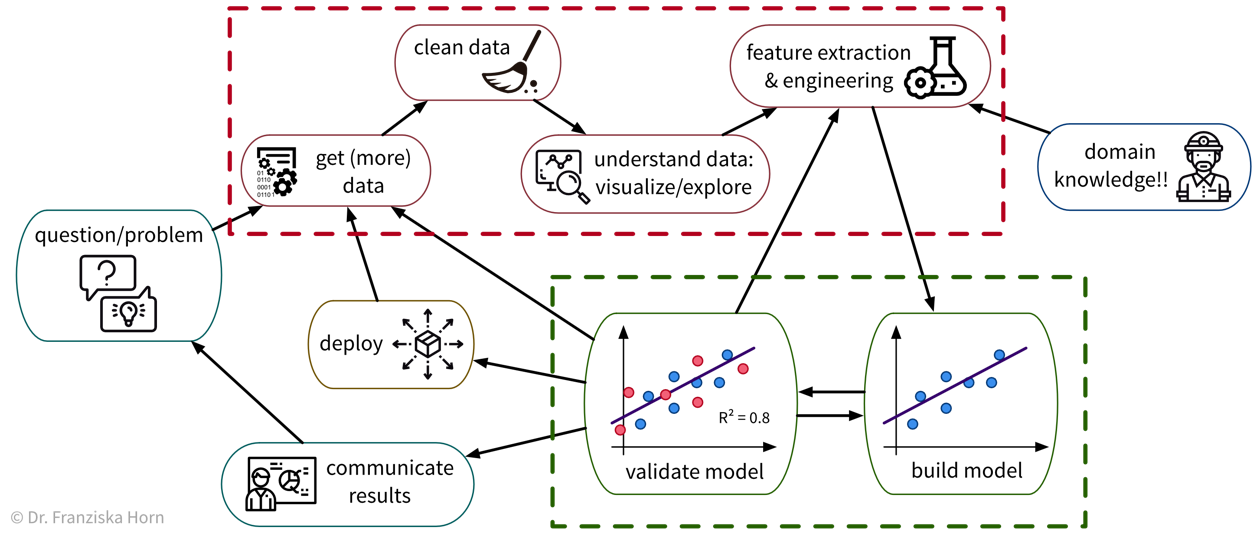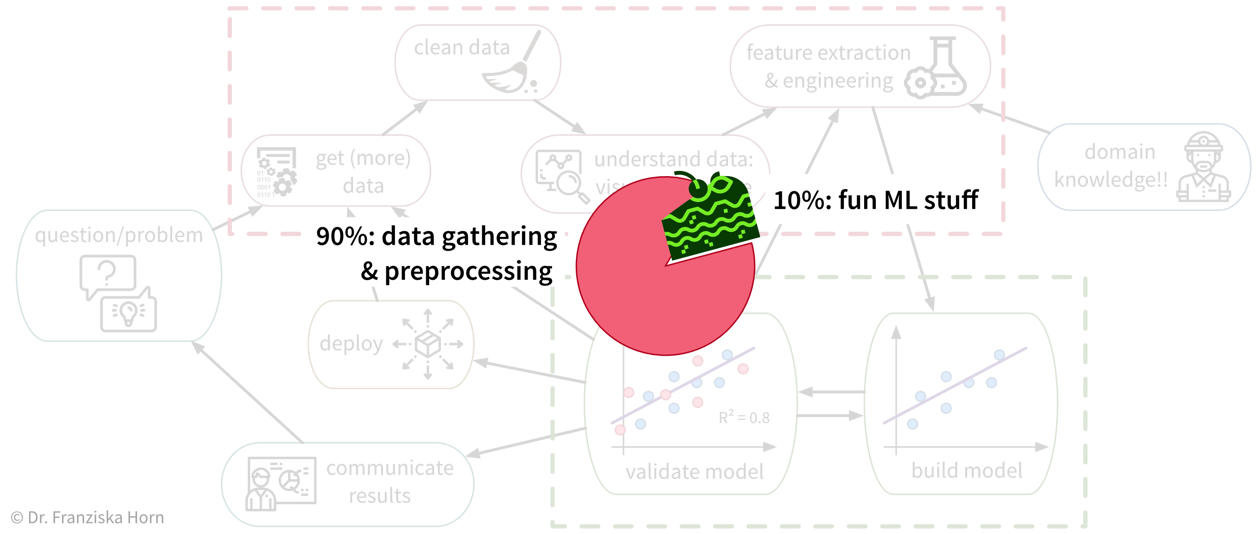Solving problems with ML
Solving “input → output” problems with ML requires three main steps:

1. Identify a suitable problem
The first (and arguably most important) step is to identify where machine learning can (and should) be used in the first place.
For more details check out this blog article.
2. Devise a working solution
Once a suitable “input → output” problem as been identified, historical data needs to be gathered and the right ML algorithm needs to be selected and applied to obtain a working solution. This is what the next chapters are all about.
To solve a concrete problem using ML, we follow a workflow like this:

Unfortunately, due to a lack of standardized data infrastructure in many companies, the sad truth is that usually (at least) about 90% of a Data Scientist’s time is spent collecting, cleaning, and otherwise preprocessing the data to get it into a format where the ML algorithms can be applied:

While sometimes frustrating, the time spent cleaning and preprocessing the data is never wasted, as only with a solid data foundation the ML algorithms can achieve decent results.
3. Get it ready for production
When the prototypical solution has been implemented and meets the required performance level, this solution then has to be deployed, i.e., integrated into the general workflow and infrastructure so that it can actually be used to improve the respective process in practice (as a piece of software that continuously makes predictions for new data points). This might also require building some additional software around the ML model such as an API to programmatically query the model or a dedicated user interface to interact with the system. Finally, there are generally two strategies for how to run the finished solution:
-
The ML model runs on an “edge” device, i.e., on each individual machine (e.g., mobile phone) where the respective data is generated and the output of the model is used in subsequent process steps. This is often the best strategy when results need to be computed in real time and / or a continuous Internet connection can not be guaranteed, e.g., in self-driving cars. However, the downside of this is that, depending on the type of ML model, comparatively expensive computing equipment needs to be installed in each machine, e.g., GPUs for neural network models.
-
The ML model runs in the “cloud”, i.e., on a central server (either on-premise or provisioned from a cloud provider such as AWS), e.g., in the form of a web application that receives data from individual users, processes it, and sends back the results. This is often the more efficient solution, if a response within a few seconds is sufficient for the use case. However, processing personal information in the cloud also raises privacy concerns. One of the major benefits of this solution is that it is easier to update the ML model, for example, when more historical data becomes available or if the process changes and the model now has to deal with slightly different inputs (we’ll discuss this further in later chapters).
→ As these decisions heavily depend on your specific use case, they go beyond the scope of this book. Search online for “MLOps” or read the book Designing Machine Learning Systems to find out more about these topics and hire a machine learning or data engineer to set up the required infrastructure in your company.
